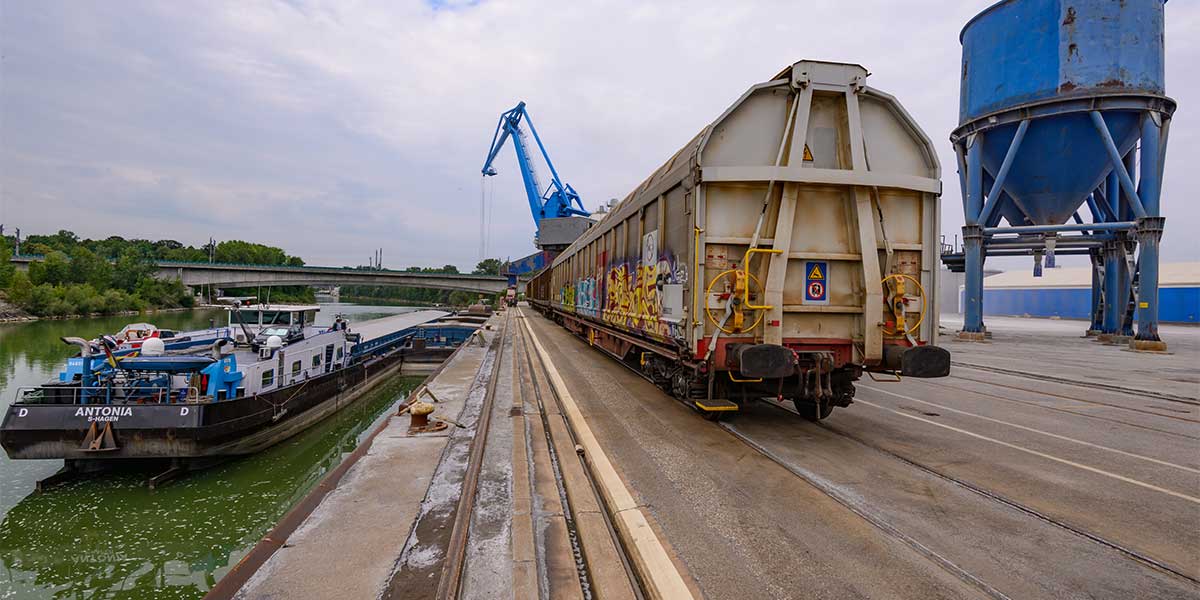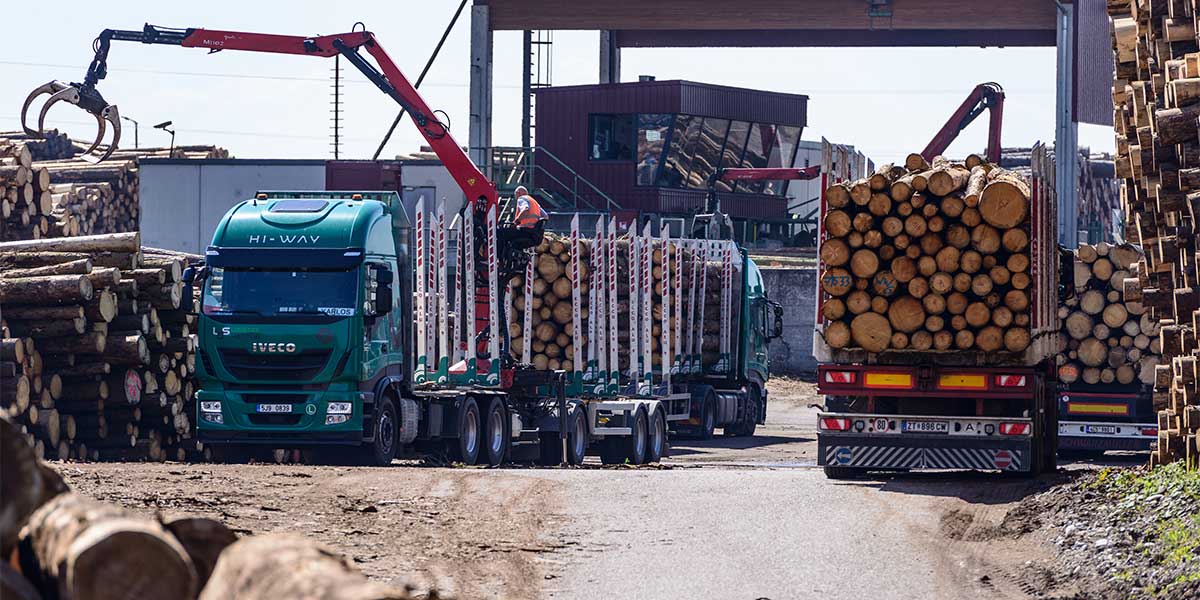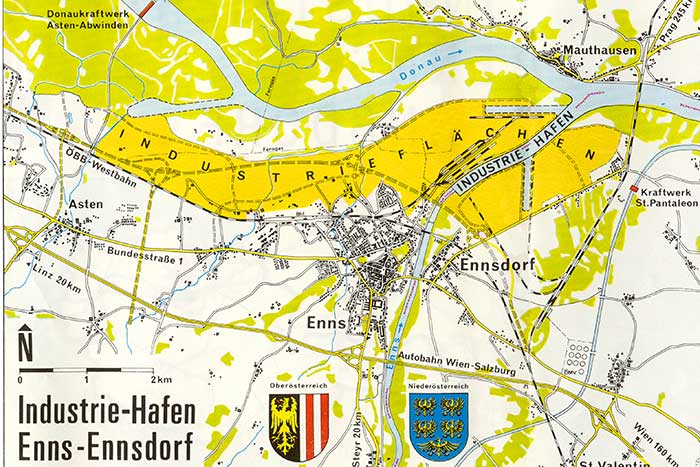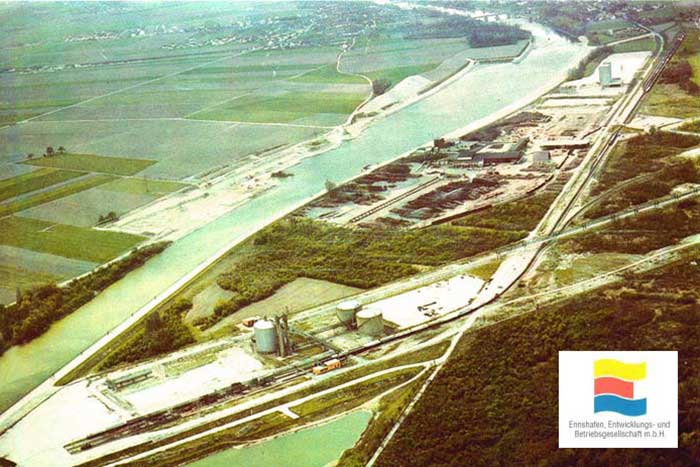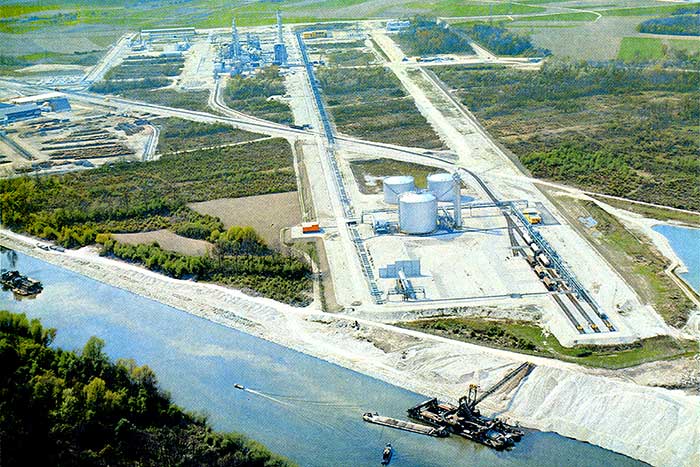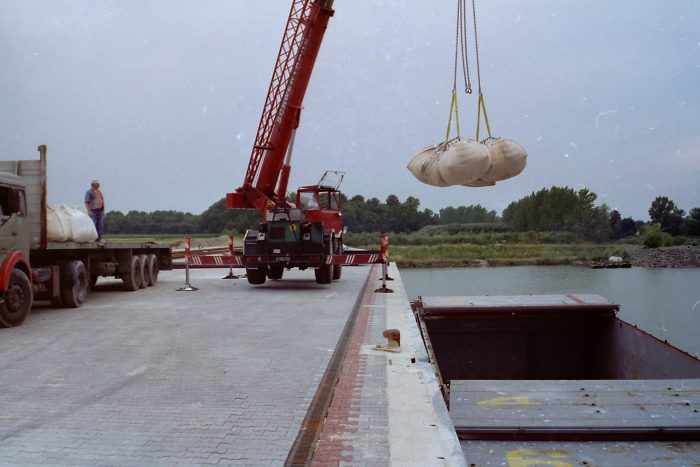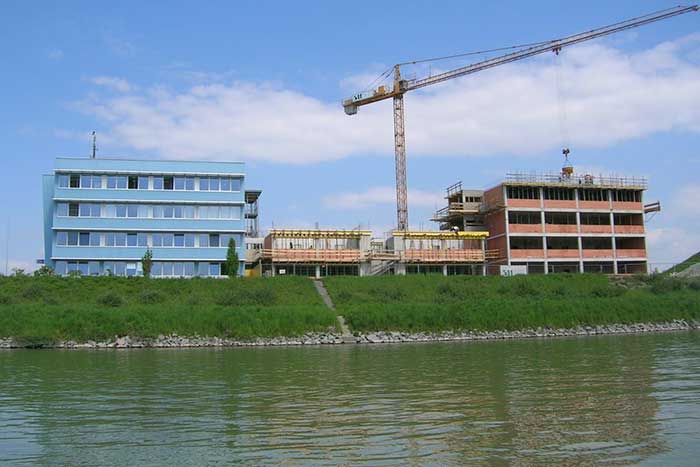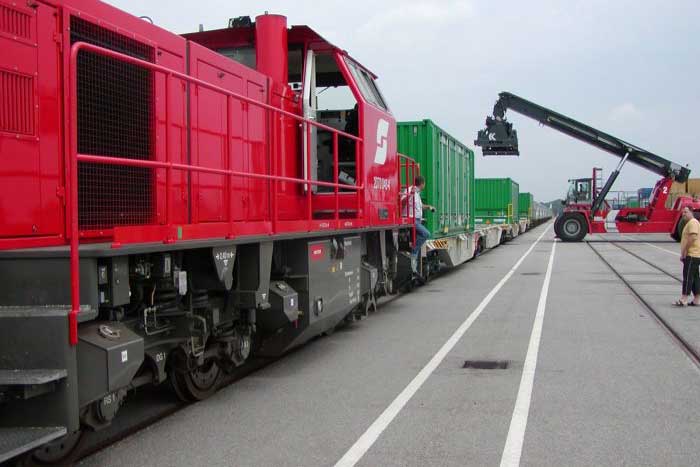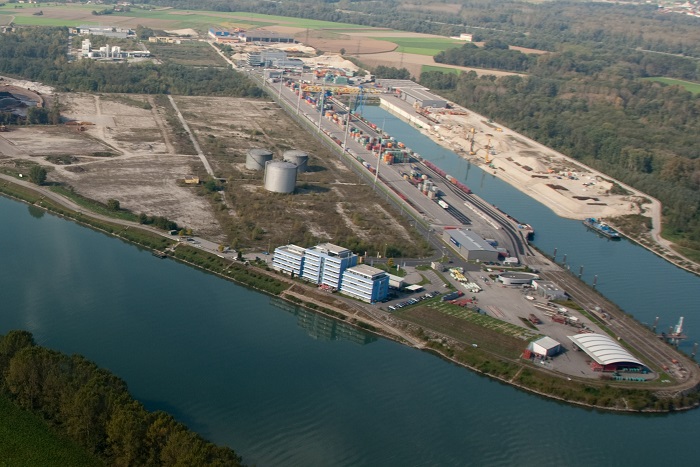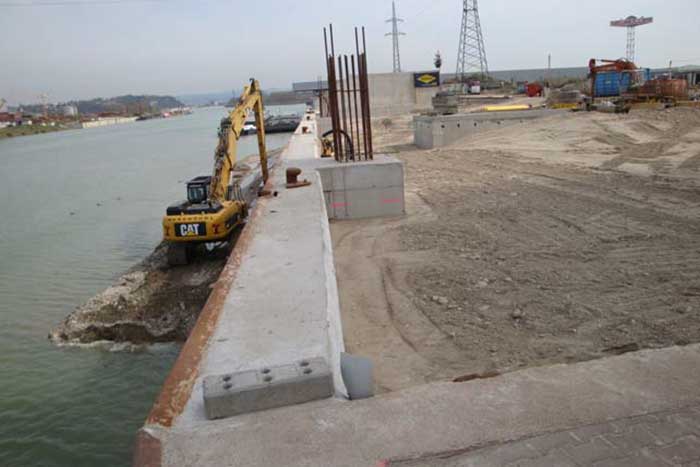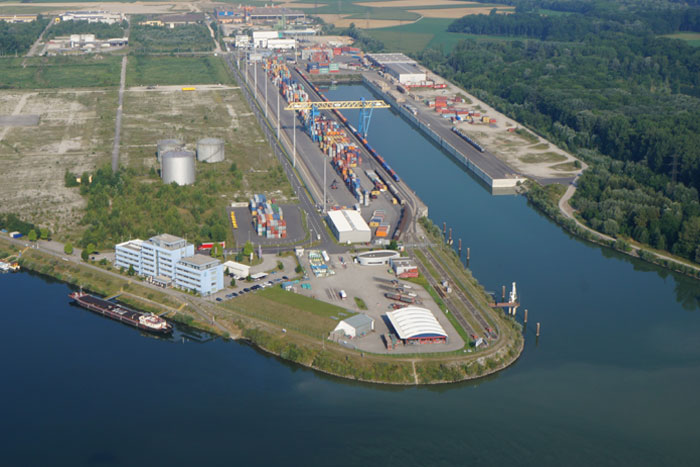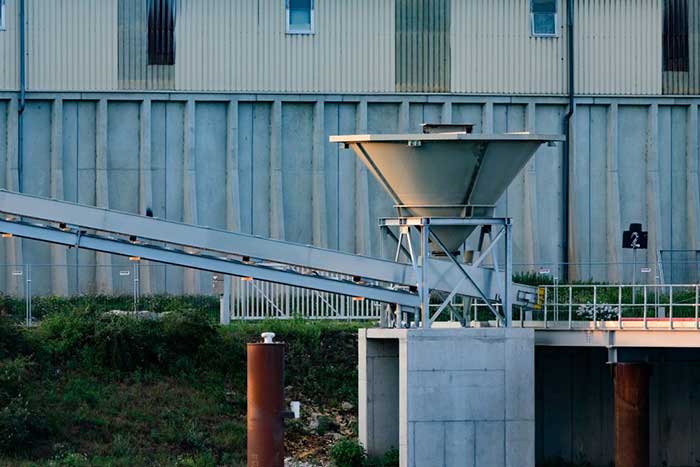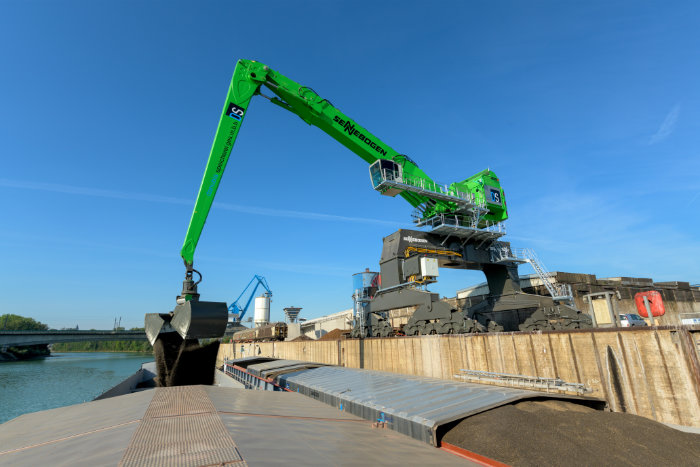ABOUT >>
ABOUT >>
HISTORY
HISTORY
ENNSHAFEN – from an ancient Roman riverport to a powerful economic hub
The ENNSHAFEN port enjoys a convenient geographic location at the nexus between two of Europe’s main transportation corridors: the Rhine-Main-Danube canal system, which links the North Sea to the Black Sea, and the north-south connection from the Baltic Sea to the Adriatic. These same routes date all the way back to the time of the Celts and Romans, who used them to trade goods such as amber, salt, and bronze. In 1566, Enns even boasted the largest port between the Bavarian town of Passau and Vienna. But with the privatization of salt transportation, port operations in Enghagen were discontinued in 1826.
In the years around 1960, Prince Kraft-Alexander zu Hohenlohe-Oehringen came up with the idea of building a port at the point where the River Enns flows into the Danube.
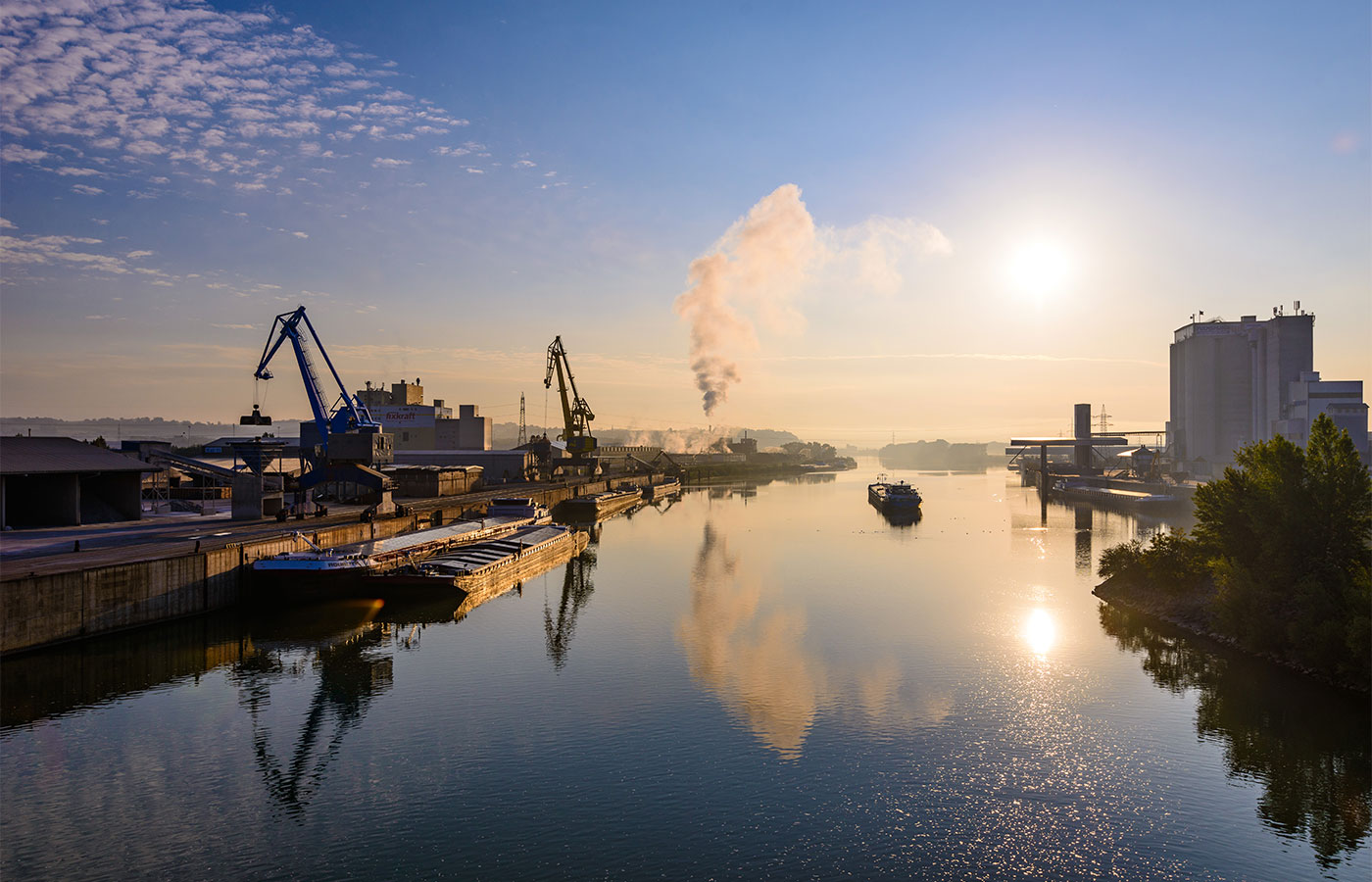
The plans signed by the prince himself developed into a concept that began to be implemented in 1974.
Initially, the port operated exclusively as an industrial port for a petrochemical facility. Towards the end of the twentieth century, the chemical conglomerate decided to call a halt to its operations at the site. This decision created exciting new opportunities for the location’s future. This paved the way for its transformation from an industrial port to a public commercial port with private transshipment companies and business settlement.
The River Enns was made accessible along its port section. Ideal inland shipping conditions were ensured with the channel suitably widened and dredged. Two additional port basins – the west and east port basins – were subsequently built, along with another 700 meters of quay facilities.
The port company started operating in 1994 and progressive development continued from there. The aim was to extend the west port basin to 900 meters and construct another 1,050 meters of quay facilities. At the turn of the millennium after the first stage of building work was completed, the logistics center opened its doors, hosting the headquarters of Ennshafen OÖ GmbH. Two more construction phases followed, with state-of-the-art information and event facilities putting the finishing touches to the center. The container terminal started trading in 2004. The ENNSHAFEN success story hurtled on to the next milestone. In 2006, Quay 4 was extended by 175 meters. In 2009, the Enns shunting yard was upgraded from four to six block train tracks. The new construction of Quay 21 added 360 meters of quay length; Quay 1 was extended by 100 meters.
In 2015, the Container Terminal Enns, including a railway feeder line, was leased to Container Terminal Enns GmbH. The container terminal was increased in size, while transshipment facilities were expanded.
2018 saw the opening of the Fixkraft loading platform, a stationary transshipment installation with four mooring dolphins.
Today, ENNSHAFEN is the leading most modern public port in Austria.
Our facility’s competitiveness ensures an effective partnership between the public sector and private enterprise. Our economically sound long-term vision and our efficient organization provide a solid foundation for the continuing expansion of our port infrastructure – an outcome that benefits the wider economy.
Every individual and business – past, present, or future – that helps to shape the idea of ENNSHAFEN is a part of this success story.
TIMELINE
TIMELINE
-
Ennshafen Entwicklungs- und Betriebsgesellschaft m.b.H., the ENNSHAFEN port development and operating company, is founded
-
The River Enns is converted into a port basin (navigable channels deepened and dredged)
The two port basins (west and east) and quay facilities are built in three phases -
Quay 21 is newly built – additional 360 m quay length added
Enns shunting yard expanded from four to six block train tracks -
The Container Terminal Enns, including railway feeder line, is leased to Container Terminal Enns GmbH
-
Danubia Speicherei sets new standards with the SENNEBOGEN 895E Hybrid, the largest hydraulic handling excavator in the world
CONTACT/DIRECTIONS
IMPRESS | DATA PROTECTION
2024 © EHG Ennshafen GmbH
+43 7223 84151-0 | office@ennshafen.at


